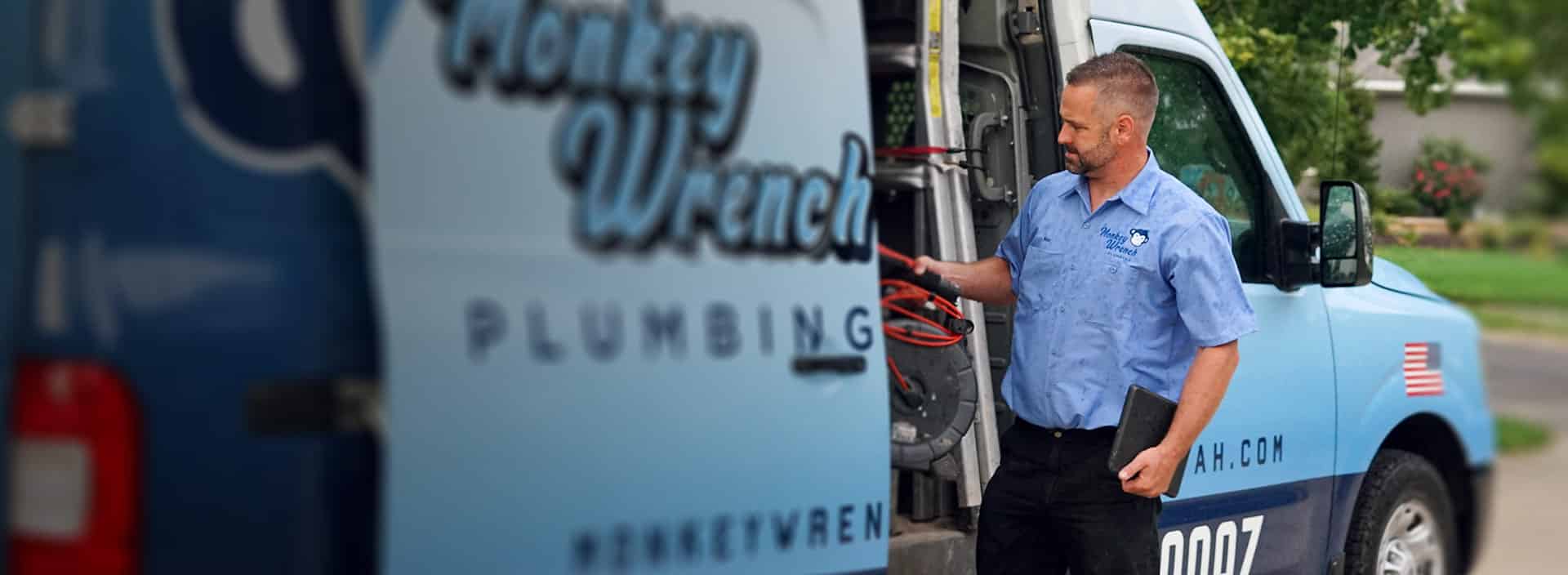1. Introduction
There’s nothing worse than waking up in the morning and realizing there’s no hot water in your house. Before you panic or call the plumber, there are a few troubleshooting tips you can try to get your hot water running again. In this article, we will discuss common issues that may cause a lack of hot water, as well as step-by-step solutions to resolve them. Whether you have a tankless water heater or a traditional hot water tank, these tips will help you pinpoint the problem and potentially save you the time and expense of a service call. If you’re in the South Salt Lake, Taylorsville, Millvale, Cottonwood Heights, Provo, or Ogden areas, Monkey Wrench Plumbing is always available to assist you with any hot water heater installation or repair needs.
2. Checking the water heater
After ruling out any external factors that may be causing a lack of hot water, the next step is to check the water heater itself. Start by inspecting the temperature setting on the heater. Ensure that it is set to the desired temperature and didn’t accidentally get changed.
If the temperature setting is fine, move on to checking the circuit breaker. It is possible that the breaker tripped, cutting off power to the water heater. Locate the breaker panel and look for any tripped breakers. If you find one, try resetting it and see if that restores the hot water.
If the temperature setting and circuit breaker are both fine, it’s time to examine the heating element. This requires turning off the power to the water heater and removing the access panel. Check the heating elements for any signs of damage or corrosion. If necessary, replace the faulty heating element.
Remember, if you are unsure or uncomfortable performing any of these tasks, it is best to seek professional help. Stay tuned for the next section, where we will discuss how to troubleshoot other potential causes of no hot water.
3. Inspecting the electrical or gas connections
In addition to checking the temperature setting, circuit breaker, and heating element, another important troubleshooting step is to inspect the electrical or gas connections of your water heater.
If you have an electric water heater, start by turning off the power to the unit at the main electrical panel. Carefully remove the access panel on the side of the water heater to gain access to the wiring connections. Check for any loose or corroded wires that may be causing a disruption in the electrical flow. If you find any issues, tighten the connections or replace the damaged wires.
For gas water heaters, ensure that the gas supply valve is turned on. If it is on, check for any kinks or leaks in the gas line that may be preventing the water heater from igniting. If you notice a leak or suspect a gas issue, it is crucial to contact a professional plumber or gas technician immediately for assistance.
By thoroughly inspecting the electrical or gas connections, you can identify and resolve any potential issues preventing your water heater from producing hot water. Stay tuned for the next section, where we will discuss remaining troubleshooting tips to help you restore hot water in your house.
4. Testing the thermostat
After inspecting the electrical or gas connections of your water heater, the next troubleshooting step is to test the thermostat. The thermostat is responsible for regulating the temperature of the water in your heater. If it becomes faulty or misaligned, it can prevent the water from heating up properly.
To test the thermostat, start by turning off the power to the water heater. Remove the access panel once again to gain access to the thermostat. Use a multimeter to check if the thermostat is accurately measuring the temperature. If it is not, you may need to recalibrate or replace the thermostat.
If the thermostat appears to be functioning correctly, you can also try adjusting the temperature settings. Sometimes, a simple adjustment is all that’s needed to restore hot water in your house.
Remember, if you are uncomfortable or unsure about testing the thermostat, it is always best to contact a professional plumber or heating technician for assistance. Stay tuned for the next section, where we will dive into more troubleshooting tips for no hot water issues.
5. Flushing the water heater tank
Flushing the water heater tank is another troubleshooting tip that can help restore hot water in your house. Over time, sediment and mineral deposits can accumulate at the bottom of the tank, reducing its efficiency and causing a lack of hot water. Flushing the tank can help remove these deposits and improve the performance of your water heater.
To flush the tank, start by turning off the power and cold water supply to the heater. Attach a hose to the drain valve at the bottom of the tank and place the other end in a floor drain or a bucket. Open the drain valve and allow the water to drain out completely.
Once the tank is empty, close the drain valve and fill the tank partially with cold water. Open the drain valve again to flush out any remaining sediment. Repeat this process until the water runs clear.
Flushing the tank should be done at least once a year to maintain the efficiency and lifespan of your water heater. If you are unsure or uncomfortable with this process, it is best to consult a professional plumber for assistance.
Stay tuned for the next section, where we will discuss additional troubleshooting tips for no hot water issues.
6. Dealing with sediment buildup
Dealing with sediment buildup is another important troubleshooting tip when there’s no hot water in your house. As mentioned earlier, sediment and mineral deposits can accumulate at the bottom of the water heater tank over time, leading to decreased efficiency and a lack of hot water.
To address this issue, you can consider installing a sediment filter to prevent sediment from entering the tank. These filters are designed to trap any impurities before they reach the tank, helping to prolong the life of your water heater and reduce the likelihood of clogs.
Additionally, regular maintenance is crucial in preventing sediment buildup. Flushing the tank at least once a year, as discussed in the previous section, is an effective way to remove sediment already present in the tank. This will help maintain optimal performance and ensure a consistent supply of hot water throughout your home.
In the next section, we will explore another troubleshooting tip that can help identify and resolve hot water issues: checking the thermostat settings.
7. Hiring a professional plumber
While there are troubleshooting steps you can take on your own to restore hot water in your house, sometimes the issue is more complex and requires the expertise of a professional plumber. If you have followed the earlier troubleshooting tips and still don’t have hot water, it might be time to call in the professionals.
A professional plumber can accurately diagnose the problem, whether it’s a faulty water heater, a malfunctioning thermostat, or a plumbing issue. They have the knowledge and experience to identify the root cause of the problem and provide the appropriate solution.
Hiring a professional plumber not only saves you time and effort but also ensures that the problem is resolved safely and effectively. They can also offer valuable advice on water heater maintenance and recommend any necessary repairs or replacements.
In the final section of this troubleshooting guide, we will discuss additional steps you can take to prevent hot water issues in the future.
8. Conclusion
In conclusion, troubleshooting a lack of hot water in your house can be a frustrating experience. While there are steps you can take on your own to identify and fix the problem, sometimes it’s best to call in the experts. A professional plumber has the knowledge and expertise to accurately diagnose the issue and provide the necessary solution. They can also offer valuable advice on water heater maintenance and recommend any repairs or replacements that may be needed. Remember, hiring a professional plumber not only saves you time and effort but also ensures that the problem is resolved safely and effectively. By following the troubleshooting tips in this guide and seeking professional help when needed, you can prevent hot water issues in your home and enjoy a consistent supply of hot water.


